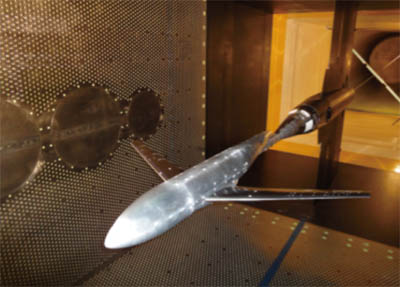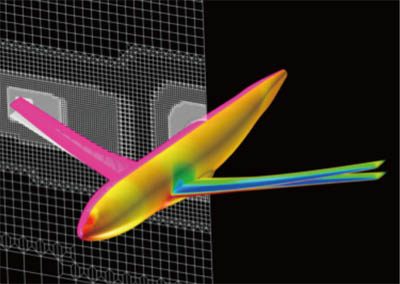Integration of EFD and CFD
High-Fidelity CFD Simulation Using Model Deformation Data
We develop the hybrid wind tunnel system that integrates Experimental Fluid Dynamics (EFD) and Computational Fluid Dynamics (CFD). The system provides CFD results during wind-tunnel testing so that people participating in the testing can check the measured data with the CFD results both quickly and precisely.
It is well known that the wind tunnel model is deformed due to aerodynamic load in the wind-on conditions. Since the model is assumed to be rigid in CFD, there may be a configuration discrepancy between the wind tunnel and CFD data. To alleviate this, in the present study, the model deformation is simulated in CFD using experimental data.
Here the model wing deformation is modeled by a polynomial form and its coefficients are determined by the least square method using measured model deformation data. Then the CFD volume mesh as well as surface mesh can be rearranged according to the model. The approach is applied to the DLR-F6 model configuration for the JAXA 2m x 2m transonic wind tunnel test. It is confirmed that the wing deformation is reasonably reproduced by the present polynomial model, and the comparison between wind tunnel and CFD data is improved.
In this way, a high-fidelity CFD simulation using measurement data can provide more detailed comparison and understanding of EFD/CFD data.

DLR-F6 configuration

CFD mesh and surface pressure distribution before/after the deformation
More information about DAHWIN Project


